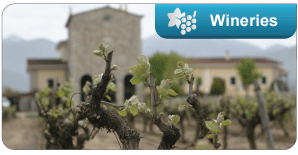Ottoman rule
Under Ottoman rule (1453-1821), the wealth of the Greek vineyard was left untapped as, in contrast to preceding rulers, the Ottoman Turks, whose Moslem religion forbade wine, saw no need to take advantage of it. At best, after the fall of Constantinople, they would allow the inhabitants in winegrowing areas of Greece to continue producing their wine (as their ancestors had done for thousands of years), going so far as to grant them privileges for self-governance (wine commerce on the islands) or even autonomy (Treaty of Tamasi). At worst, extreme measures implemented by the Ottomans included bans on wine drinking and destroying vineyards. However, although the Moslem faith forbade Moslems to drink wine or even cultivate vineyards, it gave them the right to tax the winegrowing and winemaking activities of the Ottomans’ Greek Orthodox subjects. Thus, in many areas of the Ottoman Empire where the Greek inhabitants had continued to cultivate their vineyards, the local Ottoman authorities would withhold part of the wine quantity produced as tax. Should the inhabitants refuse to pay that fealty tax, the Ottomans retaliated by ordering the vineyards to be abandoned or destroyed. In other regions, cultivation of historic vineyards went on.
In continental Greece, the monasteries, which possessed considerable land devoted to vineyards and had established the first organized wineries, contributed decisively to preserving the grape variety and wine potential of Greece. Monasteries instrumental in that preservation were the monastic communities on Mount Athos, which produced renowned wines, and the monastic communities on Meteora. During the centuries of Ottoman rule, many foreign travelers journeyed through Greece, faithfully recording in their travel journals their impressions from the country which, even past its heyday, beckoned them to explore it. Their travels also took the foreign visitors through the vineyards of Greece where they became acquainted with their uniqueness, the ecosystems in which they thrived and the grape varieties. The areas considered to be important winegrowing hubs at that time were Siatista, Naoussa, Tyrnavos, Rapsani, Nemea and, needless to say, the Aegean and Ionian islands, and Crete.


